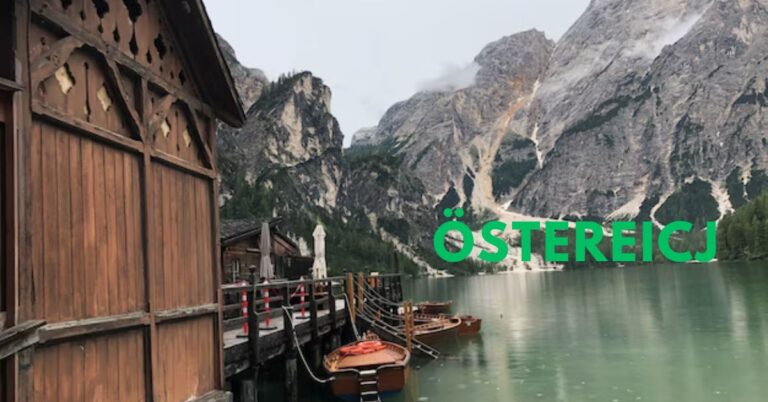Introduction to Austria’s cultural diversity
Austria, a country steeped in rich history and scenic beauty, is more than just its stunning landscapes. It serves as a vibrant cultural melting pot, where diverse ethnicities converge to create an intriguing tapestry of traditions. From the majestic Alps to charming towns that echo with stories from centuries past, Austria invites you on a journey through its multifaceted identity. Whether you’re wandering through cobblestone streets or savoring local delicacies, the blend of cultures here offers something new at every turn. Let’s dive into östereicj and explore what makes this nation so uniquely captivating!
Historical background
Austria’s history is a tapestry woven from various cultures and influences. It has been shaped by conquests, migrations, and alliances that span centuries.
The Habsburg dynasty played a crucial role in forming Austria as a cultural hub. Their reign marked an era of prosperity and artistic achievement. Vienna became the heart of music, art, and philosophy during this time.
The blending of different ethnicities began long before the modern state was established. Germanic tribes settled in the region alongside Slavs and Magyars, creating a unique social fabric.
This rich heritage also reflects in Austria’s turbulent 20th century history. The aftermath of World War I saw shifts in borders and populations.
Yet through it all, the cultural diversity remained intact. Each group contributed to what we now recognize as östereicj—a vibrant microcosm of traditions waiting to be explored.
The three main ethnic groups in Austria: Germans, Hungarians, and Slovenes
Austria is home to a rich tapestry of cultures, with Germans, Hungarians, and Slovenes playing significant roles in its ethnic composition. The German-speaking population forms the largest group. Their influence is seen not only in language but also in traditions and daily life.
Hungarians contribute a vibrant flavor to Austria’s cultural mix. This connection goes back centuries when regions were intertwined through history and trade. Hungarian festivals showcase lively music and traditional cuisine that adds diversity to the Austrian landscape.
Slovenes bring their own unique heritage into the fold. From folk dances to exquisite crafts, their customs enrich local culture significantly.
Each group has left its mark on art, architecture, and gastronomy throughout Austria’s towns and cities. Together they create a harmonious blend that celebrates both individuality and unity within this stunning country.
Traditional customs and celebrations of each group
Austria’s cultural tapestry is woven with vibrant traditions from its main ethnic groups. The Germans celebrate Oktoberfest, a lively festival filled with beer, music, and traditional Bavarian attire. This event transforms towns into bustling hubs of joy each autumn.
Hungarians bring their unique flair through the famous Busójárás festival in Mohács. Participants don elaborate masks and costumes to ward off winter, celebrating with parades and folk dances that create a captivating atmosphere.
The Slovenes shine during Prešeren Day, honoring national poet France Prešeren. Festivities include poetry readings and performances throughout Slovenia’s regions that resonate deeply within local culture.
Each group contributes its distinct flavor to Austria’s cultural calendar, showcasing how diverse customs can coexist harmoniously while enriching the nation as a whole. These celebrations invite everyone to experience Austria’s rich heritage firsthand.
Modern influences and multiculturalism in Austria
Austria thrives today as a vibrant tapestry of cultures. The influx of migrants from various backgrounds enriches its traditional heritage. Cities like Vienna and Graz showcase this diversity through their culinary offerings, art scenes, and festivals.
Modern influences are evident in the fusion of music genres. Traditional folk music blends seamlessly with contemporary styles, creating an exciting soundscape unique to Austria.
Street art has also taken center stage, transforming urban spaces into open-air galleries that celebrate multicultural narratives. Here, artists express their identities against the backdrop of historic architecture.
Moreover, numerous cultural events honor different traditions throughout the year. These occasions unite communities while inviting visitors to engage with diverse customs firsthand.
As globalization continues to shape society, Austria stands at a crossroads where history meets modernity—creating an evolving identity that reflects its multicultural essence beautifully.
Famous cultural landmarks and attractions in different regions of Austria
Austria is a treasure trove of cultural landmarks, each telling its own story. In Vienna, the opulent östereicj Palace showcases imperial grandeur and beautiful gardens that reflect centuries of history.
Traveling west to Innsbruck, you’ll find the iconic Golden Roof. This stunning building features a mosaic of 2,657 fire-gilded copper tiles and offers visitors a glimpse into Tyrolean heritage.
Salzburg breathes music with its historic fortress östereicj overlooking the birthplace of Mozart. The city’s baroque architecture adds to its enchanting atmosphere.
Meanwhile, in Graz, the UNESCO-listed Old Town invites exploration through winding streets filled with artistic flair and medieval charm.
Each region represents a unique aspect of Austria’s rich tapestry—an invitation for travelers to immerse themselves in diverse experiences across this vibrant nation.
Tips for travelers to experience the diverse culture of Austria
To truly experience Austria’s rich culture, immerse yourself in local traditions. Attend regional festivals like the Vienna Opera Ball or Salzburg’s Advent markets. These events showcase vibrant customs and bring communities together.
Explore beyond major cities. Visit smaller towns such as Innsbruck or Graz for authentic experiences. Each area offers distinct food, music, and art that reflect its heritage.
Try traditional dishes like Wiener Schnitzel or Sachertorte at family-run eateries. Engage with locals to learn about their culinary secrets.
Take guided tours that focus on cultural history. Many offer insights into the lives of different ethnic groups in Austria.
Learn a few phrases in German, Hungarian, or Slovenian. A simple “hello” can open doors to deeper connections with residents who appreciate your efforts to embrace their background.
Conclusion: Celebrating the unique blend of cultures in
Austria stands as a vibrant testament to the beauty of cultural diversity. The rich tapestry woven by its various ethnic groups, including Germans, Hungarians, and Slovenes, has created a unique identity that is both historical and modern. Each group contributes distinct traditions and celebrations—whether it’s the lively Oktoberfest in Munich or Slovenia’s charming östereicj festival.
Modern-day Austria embraces multicultural influences from around the globe. This fusion can be seen in contemporary art scenes, diverse culinary offerings, and festivals celebrating different heritages throughout the year. It all adds up to an environment where tradition meets innovation.
Travelers looking to immerse themselves in this cultural melting östereicj will find numerous landmarks across regions—from Vienna’s imperial architecture showcasing historic splendor to Salzburg’s musical heritage echoing through its cobblestone streets. Engaging with local customs brings life to these sites and deepens understanding of their significance.
Experiencing Austria means stepping into a narrative filled with layers of history, creativity, and shared stories among different communities. Each visit offers new discoveries about how cultures intertwine within this beautiful country—a place where every corner whispers tales of unity amid diversity.
FAQs
What is östereicj?
östereicj is a term that captures the essence of Austria, emphasizing its role as a cultural melting pot in Central Europe. It highlights Austria’s rich history, diverse ethnic groups, and the unique blend of traditions that define the country.
How has Austria’s history shaped its cultural diversity?
Austria’s history, marked by the Habsburg dynasty and various cultural influences, has created a rich tapestry of traditions. Historical conquests, migrations, and alliances contributed to the country’s diverse cultural landscape, blending Germanic, Slavic, and Magyar influences.
What are the main ethnic groups in Austria?
The primary ethnic groups in Austria are Germans, Hungarians, and Slovenes. Each group has contributed its own traditions, customs, and cultural practices, enriching Austria’s overall cultural fabric.
How does Austria celebrate its cultural diversity today?
Austria celebrates its cultural diversity through various festivals and modern influences. Events like Oktoberfest and Busójárás, along with contemporary street art and multicultural festivals, reflect the country’s vibrant, evolving cultural scene.
What are some must-visit cultural landmarks in Austria?
Key cultural landmarks in Austria include Vienna’s Schönbrunn Palace, Innsbruck’s Golden Roof, Salzburg’s Hohensalzburg Fortress, and Graz’s UNESCO-listed Old Town. These sites offer insights into Austria’s historical and artistic heritage.

